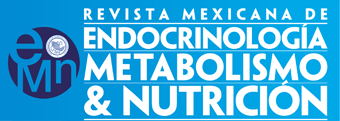Lipotoxicity: unraveling the deleterious mechanisms of free fatty acids to damage the cell
Corazón de Ma. Márquez-Álvarez, Laboratorio de Investigación en Enfermedades Metabólicas e Infecciosas, División Académica Multidisciplinaria de Comalcalco, Universidad Juárez Autónoma de Tabasco, Villahermosa, Tab., México
Nancy P. Gómez-Crisóstomo, Metabolic and Infectious Diseases Research Laboratory, Comalcalco Multidisciplinary Academic Division, Universidad Juárez Autónoma de Tabasco, Comalcalco, Tab., Mexico
Erick N. de la Cruz-Hernández, Metabolic and Infectious Diseases Research Laboratory, Comalcalco Multidisciplinary Academic Division, Universidad Juárez Autónoma de Tabasco, Comalcalco, Tab., Mexico
Eduardo Martínez-Abundis, Metabolic and Infectious Diseases Research Laboratory, Comalcalco Multidisciplinary Academic Division, Universidad Juárez Autónoma de Tabasco, Comalcalco, Tab., Mexico
The development of obesity implies an excessive accumulation of triglycerides into adipose tissue, triggering the expansion of adipocytes, an increased synthesis of free fatty acids, as well as the rise of ectopic deposits of fat that appear when the storage capacity of adipocytes as well as the oxidative capability of mitochondria is exceeded. Therefore, lipids levels are increased, disrupting several cellular functions. Under such conditions, mitochondria, Golgi apparatus, and endoplasmic reticulum are the most affected cell organelles among several bioenergetics- related pathways. Oxidative stress, mitochondrial dysfunction, inflammation, and cell death activation are some of the more studied mechanisms to understand the molecular effects of lipotoxicity on cellular function; therefore, in this review, we describe the findings that explain the toxicity resulting from the excessive storage lipids on cellular metabolic pathways and organelles´ functions, pointing out those aspects that remain as open questions for future research.
Keywords: Obesity. Lipotoxicity. Mitochondrial dysfunction. Free fatty acids. Ectopic fat accumulation.





